After a second consecutive first-round playoff loss to the Boston Bruins, you knew changes were coming. After the 2018-19 Toronto Maple Leafs were eliminated, there were four key areas that stood out as in need of addressing:
- Defense
- Depth (particularly some forward depth that could take away some defensive responsibility from the top offensive players on the team)
- Special teams (more so the penalty kill, but the power play struggled, too)
- A backup goalie
As of mid-July, what has been accomplished?
| Out | In |
|---|---|
| Jake Gardiner | Tyson Barrie |
| Nazem Kadri | Alex Kerfoot |
| Nikita Zaitsev | Jason Spezza |
| Patrick Marleau | Cody Ceci |
| Connor Brown | Nick Shore |
| Ron Hainsey | Kenny Agostino |
| Tyler Ennis | Ben Harpur |
| Calle Rosen | Ilya Mikheyev |
| Michael Carcone | Kevin Gravel |
| Aaron Luchuk | |
| 64 goals, 196 points | 51 goals, 186 points |
In the process, the Leafs have also traded away a conditional first-round pick and a seven-round selection in the 2020 draft while receiving a third and a sixth in the 2020 draft in return. They also re-signed goalie Michael Hutchinson to a one-year, one-way deal worth $700,000. The team can easily bury that contract without a cap penalty, but there is an indication here that he will be battling incumbent Garret Sparks for the backup job.
The Defense
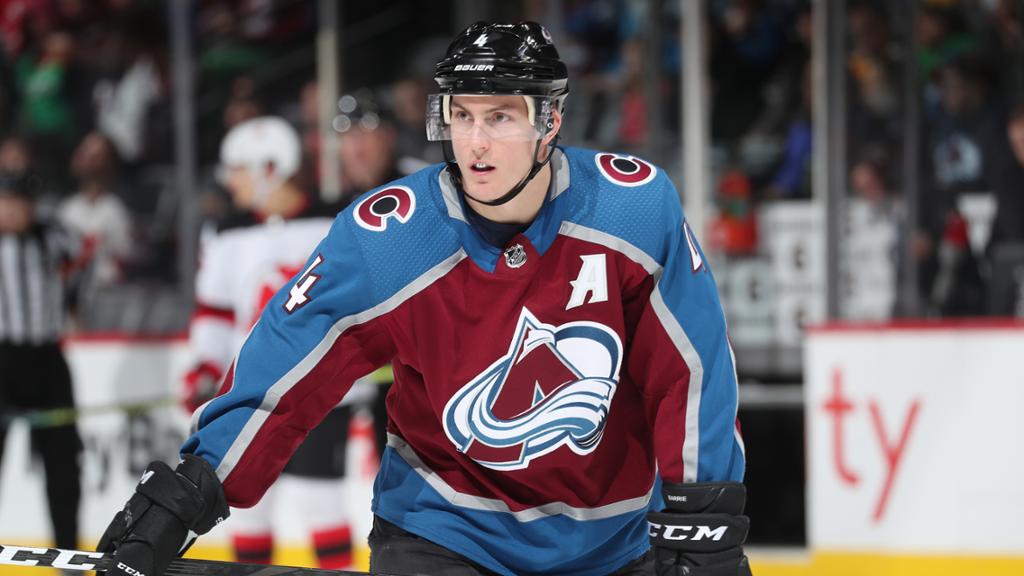
The defense has lost two of their top-four defensemen to end last season in Ron Hainsey and Nikita Zaitsev, plus the presumed loss of Jake Gardiner. In their place: Tyson Barrie, Cody Ceci, and a question mark (Travis Dermott is hurt to start the year).
Barrie is good — and elite on the power play, where he brings a big right-handed shot and is seventh in points among defenseman over the last three seasons — although he was sheltered at 5v5 in Colorado. His non-neutral zone offensive zone starts the past three years were 71.7, 69.5 and 63.3 percent. He was not part of Colorado’s top matchup pairing — that was Samuel Girard and Erik Johnson. Conversely, Ceci was used in a heavy matchup role and was buried in it – he hasn’t broken 42 percent of the shot attempt share since 2014-15(!).
How these pairings shakeout is anyone’s guess, but there’s no readily obvious top matchup pairing. A Rielly–Barrie offensive pairing would be fun to watch, but a Muzzin–Ceci shutdown pairing to follow would arguably give it all right back. Alternatively, they could split their differences and try Muzzin–Barrie in the top matchup role and see how it goes.
Barrie is used to the Leafs’ firewagon type of hockey — while playing with Nathan MacKinnon last season (the forward he was on the ice with the most at 5v5), the Avalanche basically traded high-danger scoring chances one for one (the numbers were 118 vs. 114), which is sort of in line with the Leafs’ style of trusting your scorers to outscore the other team given the same number of chances. That would leave Rielly – Ceci as the other pairing, and would that sink Rielly? He has made great strides in his game, and if they were sheltered enough, he could probably carry that pairing and make it respectable if they were sheltered enough. But that’s not exactly maximizing your extremely-productive defenseman.
Without Dermott, it’s difficult to be creative with the pairings unless someone emerges in camp. The top four is set in some shape or form: Rielly, Muzzin, Barrie, and Ceci. With Dermott in the mix, you could argue a case for matching up Rielly–Muzzin and pairing Dermott–Barrie in an offensive role to run roughshod in secondary matchups. In the meantime, the unit is full of question marks, and the third pairing is completely unknown at this time, with Marincin, Harpur, Justin Holl, Kevin Gravel, Andreas Borgman and possibly Rasmus Sandin and Timothy Liljegren all in the mix.
The general consensus has been that Sandin and Liljegren should stay with the Marlies to start the season, but both have been productive enough to warrant serious consideration and the Marlies have given both significant responsibilities. Without Dermott, the Leafs don’t have many other options with upside; they would all just be stopgaps. Ultimately, the team has to do what’s best for the two individuals and their growth, but it’s possible an early cup of coffee before returning to the AHL to further refine their game could make sense. The competition they would be facing wouldn’t exactly be difficult.
It’s a shame we never got to see a healthy Gardiner after the team acquired Muzzin, and I’m not sure the defense to start next season will be overall better than the one that was in the playoffs last year, but it will be an improvement over the group that started last season: Rielly–Hainsey, Zaitsev–Gardiner, Dermott–Ozhiganov.
Forward Depth
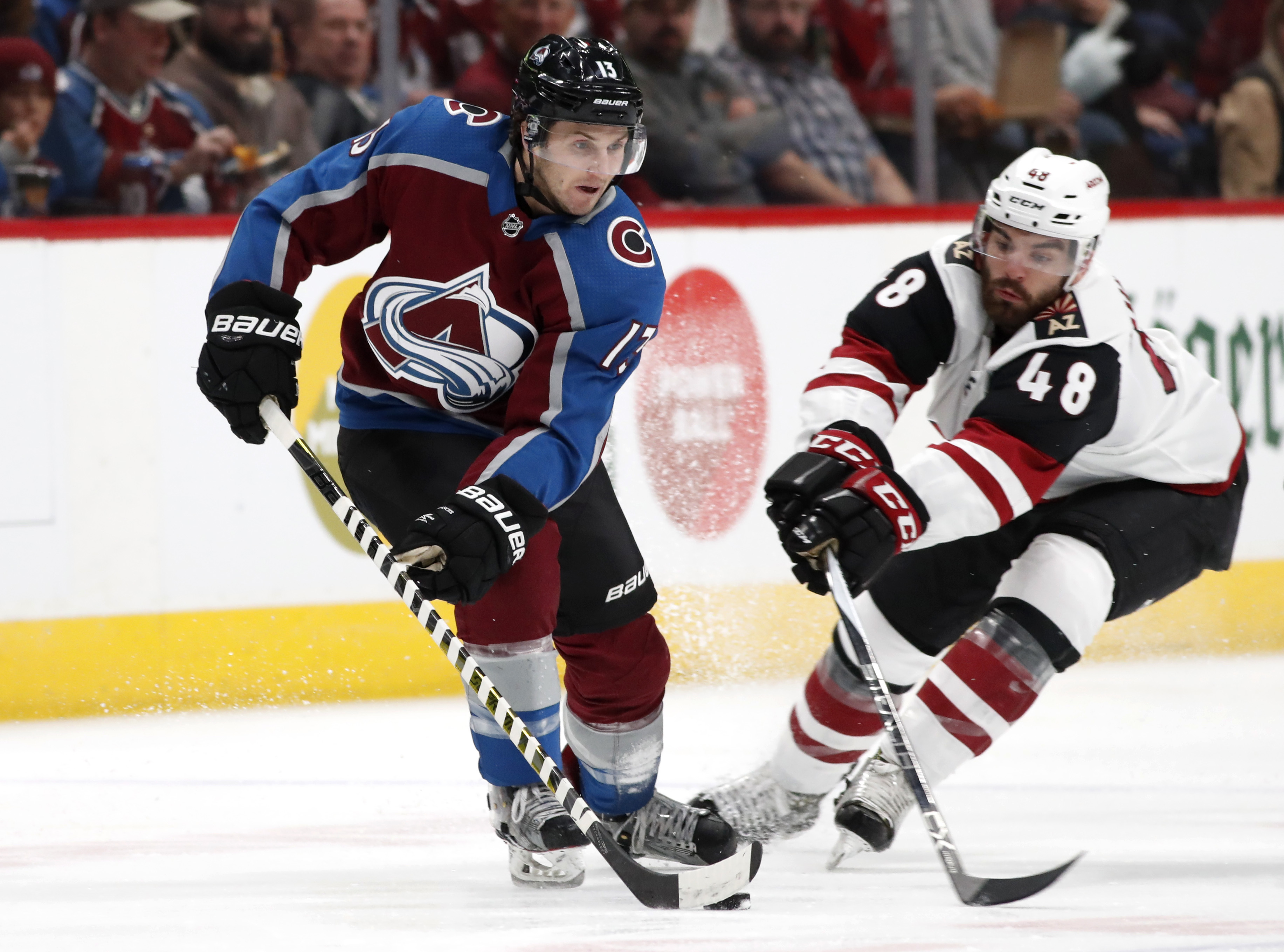
Once Nazem Kadri was suspended, the Leafs were essentially locked into playing William Nylander at 3C due to the fact that the alternatives were Patrick Marleau or Frederik Gauthier – neither would adequately suffice against a strong and deep Bruins team.
The Leafs went into the season lauded for their depth, sporting a center group of Matthews – Tavares – Kadri that was formidable on paper. However, Kadri went on to have a down season. He wasn’t in his accustomed matchup role and yet posted his lowest ever goal total in a full season with 16; a reduced, soft scoring role was not a good fit. In Kerfoot, he’s much more appropriate for a depth scoring role and he nearly replicated Kadri’s production (one fewer goals, two fewer points), playing over a minute less per night.
There is a big question mark for Kerfoot, though, and that is whether he can be a full-time center. His most common linemates were Tyson Jost and Colin Wilson, and while he did often take faceoffs, Jost was the center of that line. He also played quite a bit with Nathan MacKinnon and was obviously on the wing in those 220+ minutes of ice time. In the playoffs, he was regularly a winger, which is somewhat telling.
If he ends up as a full-time winger, that will mark the third, young(er), middle-tier scoring the winger the Leafs have locked up this summer, joining Andreas Johnsson and Kasperi Kapanen. If Kerfoot can handle full-time 3C duties, he could possibly join those other two forwards to create a fast, pesky third line capable of chipping in offensively. Kerfoot has been generally sheltered in his first two seasons, starting over 60 percent of his non-neutral zone faceoffs in the offensive zone. If he’s a winger, he could play on any line in the top nine, and the Leafs do have a need on the left wing.
The other depth pieces that have been added also have little history of being trusted in tough, defensive roles – Spezza, Agostino, Mikheyev.
In the playoffs, there was real life to Auston Matthews in tough matchups – better backchecking, better coverage in his own, and an understanding of where to be in his zone. These were positive developments. The Leafs have now set their lineup to continue playing Tavares in the toughest matchup and have Matthews take the secondary matchup. Really, the money on their cap dictates this, too. You can’t be sheltering a player making over $11M no matter how much he’s scoring.
The rest of the lineup is depth scoring now, but there’s little in the way of diversity. There isn’t really any physicality to speak of unless Mason Marchment makes the team. There isn’t a collection of forwards you would designate to bury with defensive zone starts to free up the Matthews or Tavares line a bit offensively. There isn’t even much penalty killing-wise (which I discuss more below).
Nick Shore was an intriguing addition in this regard. He was a legitimate 4C on the LA Kings before he was traded a few times, washed out of the league, and went to the KHL. He’s also a right-handed center on a team that lacks them. The overall direction for the fourth line is going to be interesting to monitor considering the options – Shore, Marchment, Agostino, Spezza, Frederik Gauthier, Trevor Moore, Mason Marchment, and Nic Petan. That’s quite the mix of player types, speeds, and styles.
Against average to mediocre teams, the Leafs scoring depth will pretty well overwhelm all of them, but against top teams, it’s more of a stalemate. Sneaking on fourth lines for a defensive shift to get Tavares/Matthews a softer matchup can be a win on the margins, but I’m still not sure the Leafs are equipped to do this. I’m also still not sure the trade deadline doesn’t roll around again with the Leafs contemplating adding a 4C or depth grinder for draft picks — yet again.
Penalty Kill
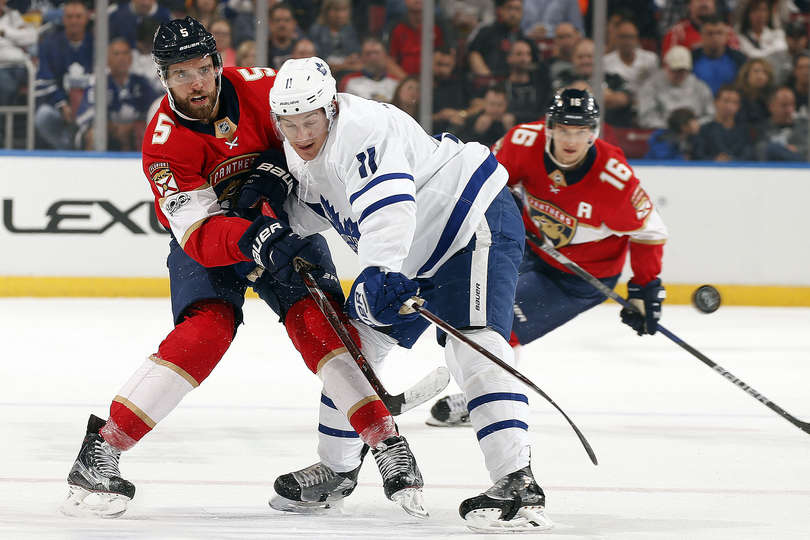
On the penalty kill, it certainly will look different, but whether it is improved is a different story. For the past few seasons, Zaitsev, Hainsey, and Brown have all been staples –- they were three of the four most played players shorthanded on the team last season (Hyman was the other). As a whole, the unit has ranked 10th, 11th and 17th in kill efficiency over the past three seasons.
Compounding matters is that Zach Hyman is hurt to start the upcoming season and they will have a new coach running the unit. In terms of holdovers, that essentially leaves Jake Muzzin, Kasperi Kapanen, Mitch Marner, and if you squint your eyes, Morgan Rielly and maybe John Tavares.
As for the new additions, there aren’t readymade solutions at forward. Kerfoot has no history of killing penalties in the NHL. Jason Spezza did play there in Ottawa but was not used in Dallas on the penalty kill. After he signed with the Leafs, he did say, “I had a good chance to sit down with Babs and also separately with Kyle. It’s just that I am going to be a complementary piece for the team and at different times my role will change. Being on the second power-play unit, being able to play on special teams both ways, taking faceoffs — kind of what I expected.” So, the career 53% faceoff man – and a righthanded one, which the Leafs lack – will at a minimum be in the shorthanded faceoff role to start the season.
Three seasons ago, Tyson Barrie averaged 33 seconds per night on the penalty kill –- the highest of his career over a full season (in the lockout-shortened season, he averaged 1:11 there per night). Kenny Agostino has no real history of it at the NHL level. The two acquisitions that do are former Senators Cody Ceci and Ben Harpur. Ottawa has had a bottom-ten penalty kill for three seasons running now — not that it falls squarely on Ceci and Harpur.
Nick Shore was also a regular penalty killer years ago while on the Los Angeles Kings. In-house, the team does have Andreas Johnsson and Trevor Moore as options they have used on occasion previously.
We can say the regulars at this time look like to be Muzzin, Ceci, Kapanen and Marner with Spezza in a faceoff role. The players *most likely* to be used include Rielly, Shore, Moore and Harpur, if he makes the team. Martin Marincin would surely get time there as well if he gets into some games.
The penalty kill has been trending down in Toronto and was taken to the woodshed by the Boston Bruins in the playoffs. There’s no question it needed some change, but the changes certainly make it a work in progress — and that’s probably the nice way of looking at it.
The Patrick Marleau trade
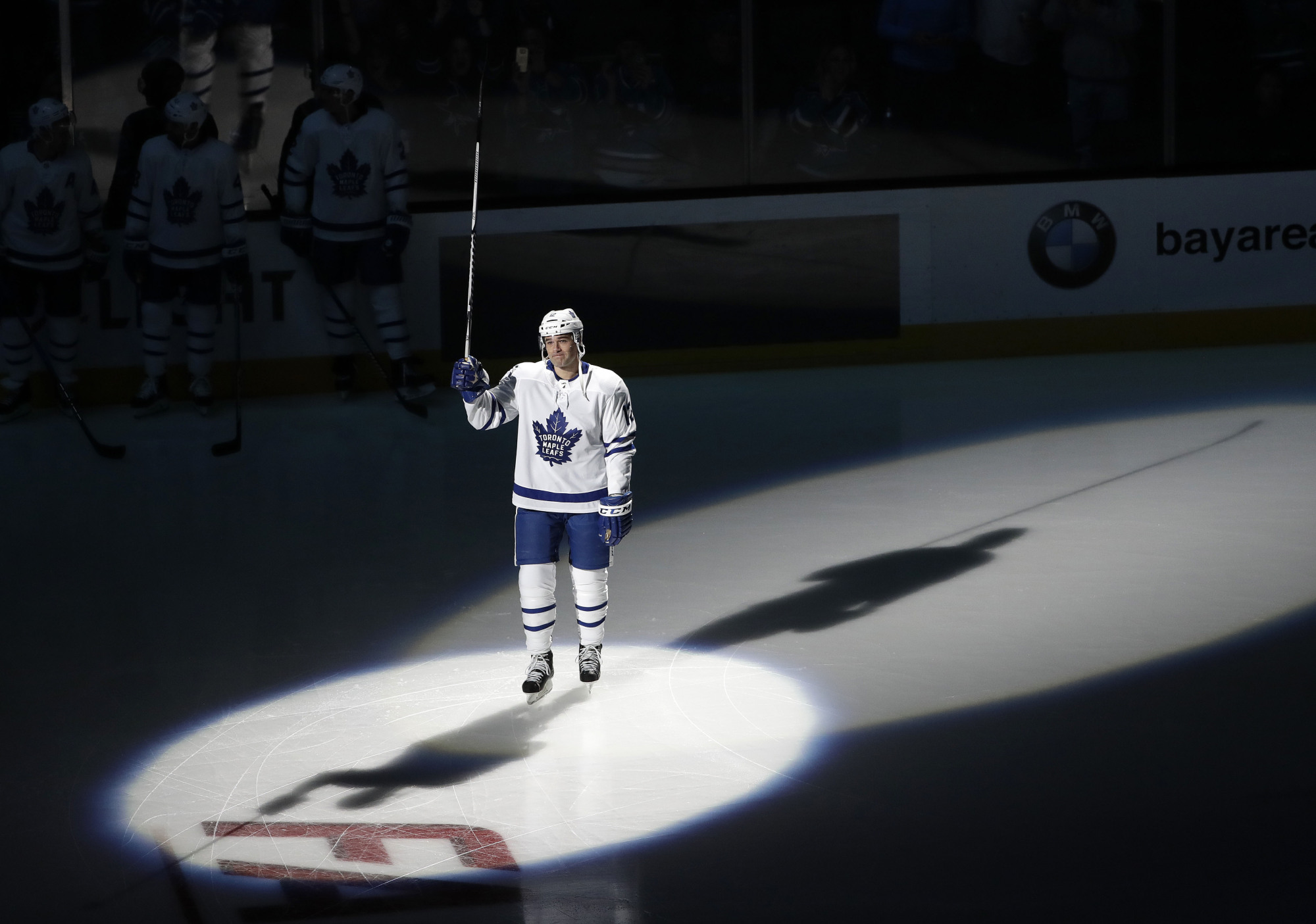
The first thing this trade made me think of was a move Arizona and Detroit made a few years ago wherein the final year of Pavel Datsyuk’s contract was offloaded and the Red Wings moved back four spots in the first round of the draft (Arizona drafted Jakub Chychurn, Detroit drafted Dennis Cholowski) while the Red Wings also netted a second and ate Joe Vitale’s contract in the process.
Arizona has also used cap room to acquire Lawson Crouse by taking on Dave Bolland’s contract. In that deal, Florida netted a second and a third.
Typically, salary dump trades include an exchange of money/bad contracts — David Clarkson for Nathan Horton, Dion Phaneuf and Nate Thompson for Nick Shore and Marian Gaborik being two other examples.
Due to the Jake Muzzin trade, the Leafs didn’t have a first round pick this year to play with.
It was a necessary trade because the Leafs needed the cap room, but it was a big price to pay considering there was only one year left on the deal. Although it’s likely to be a late round pick — and it’s protected in case it isn’t — it has to be noted this is the second draft in a row the Leafs have traded their first-round pick. According to Travis Yost’s research, “acquiring two first-round picks, for example, gives you roughly a 95% chance at obtaining an NHL player.” Productive players on ELCs in a cap world where you have Matthews, Tavares, likely Marner, and Nylander signed to big deals is crucial to continuity and sustainable success.
It’s also, as we can see, a tough trade to find a comparable for. The Leafs received no tangible value back from Carolina, although there is obviously value in simply clearing cap space.
There were very few suitors given the cap barely went up and Marleau had full control over the situation. It was a necessary evil, but it wasn’t cheap. If you said going into the draft the Leafs would be packaging a first to get rid of Marleau, the expectation would be that someone would bite on that deal. Carolina did.
The Nazem Kadri Trade
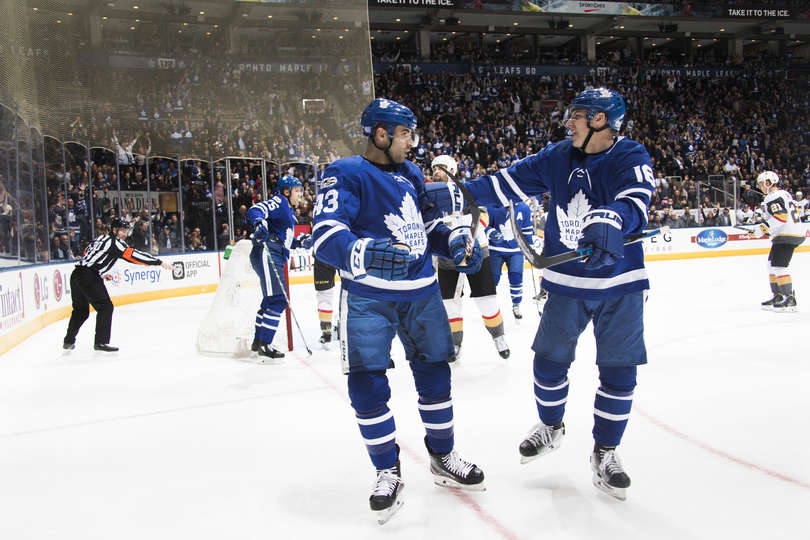
Assets are evaluated based on two main components in this league — how good is the player, and how good is the contract? In the case of Kadri, he is both an excellent player — who can play center in a tough matchup role and has two 32-goal seasons on his resume — and he was signed to a fantastic deal that has him earning $4.5M for the next three seasons. Finding a player of that caliber at that number is very difficult, and that holds extra value.
That’s how the Leafs were able to net out a legitimate top-four defenseman who is a free agent next season (and reportedly wants $8M per year on his next deal) as well as a cost-controlled, young, top-nine forward. Not to be forgotten is that they traded Calle Rosen, whose production in the AHL indicates he should be a legitimate NHL defenseman (although I wouldn’t bet on him becoming a top-four defenseman).
Considering he’s a cost-controlled asset in his prime playing a premium position and has proved capable of handling tough minutes, Kadri is the best player moving in the trade. The Leafs had to do something on defense, though, and unless Kadri was moving up to the wing in the top six, they were partially wasting him. It is a shame we did not get to see any creativity from the coaching staff in an attempt to get more out of the three-headed center group — they could have moved Kadri up to the wing, they could have tried running 11 and 7 to get more out of each center, or they could have even paired Matthews and Tavares and bumped Kadri up to the 2C spot. That seems like a bit of a missed opportunity to not have even tried.
There was also a collection of quality right-handed defensemen that moved this summer: PK Subban, Matt Niskanen, Radko Gudas, Colin Miller, and Justin Braun. The Leafs paid the biggest price, but Barrie is at the top end of that group and doesn’t carry a huge contract (at the moment) and the team likely didn’t want to empty their draft pick cupboard, which is what most of the above defensemen went for.
By adding in Kerfoot, the team was able to secure some long-term value out of the move. Kerfoot is a nice top nice forward and there might be some sneaky additional value here for the team in freeing up a few extra minutes to distribute to Matthews and Tavares. With Kadri, there was a need to get him at least 16 minutes, and that came at the expense of the top two centers (the fourth line barely played, anyway). Now they can shorten the third line’s ice time to a more reasonable 11-14ish minutes (depending on the number of penalties in a game) and open up a few extra minutes to play with for the top two lines. Plus, Kerfoot has proven productive in that lower time range and that’s a more appropriate fit for him.
The trade provides some better fits to the lineup in terms of a righthanded defenseman and a productive top nine forward. But if Barrie doesn’t handle tough minutes in a matchup role and is instead more of a sheltered, second-pairing, offensive player who then walks in a year, and Kerfoot turns out to be a depth scoring winger, that’s not a great return for a cost-controlled, legitimate tough matchup 2C.
Additional Thoughts
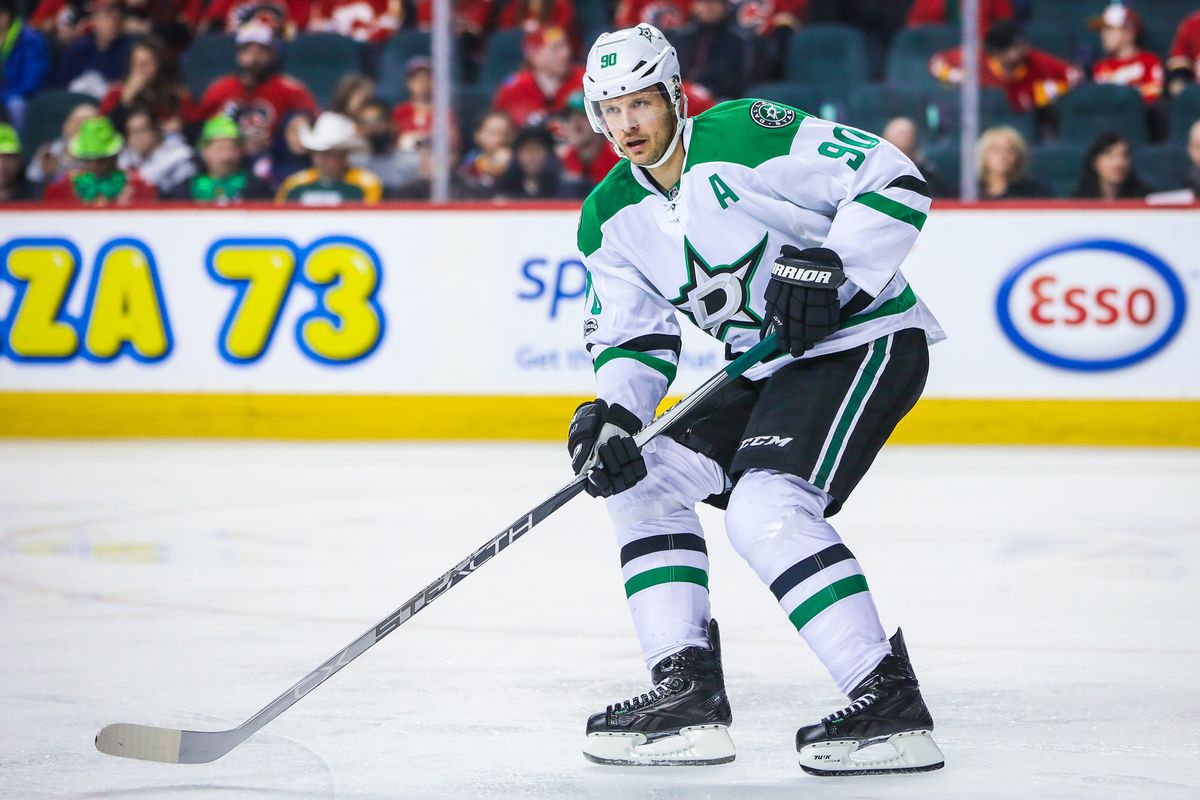
- I thought the Leafs might bite the bullet this summer and put some money in on a 4C, but they went bargain bin hunting yet again. Last summer, the only move they made at that spot was signing Par Lindholm. Granted, the prices for a 4C were not cheap. Pierre-Edouard Bellemare signed a two-year deal worth $3.6M total. Noel Acciari signed for three years and $5M. It’s understandable that the Leafs wouldn’t want to pay those prices and Shore is a decent bet, but let’s remember that in the last three seasons, the team traded for Brian Boyle, Tomas Plekanec, and kicked tires last season on Luke Glendening. Is this going to be an annual thing? Is Shore the answer? Can they develop an answer in-house? It seems like a small thing, but the differences between top teams are slim and squeezing out good shifts from your bottom lines to either, a) chip in or b) free up the top lines has value in long playoff series.
- The backup goaltending market was also slim pickings – former Leaf Curtis McElhinney was probably the best option in terms of a pure backup and he signed for two years at the cost of two depth forwards (he is making $1.3M per season). For a team that is right up against the cap, that’s probably a bit too expensive. Given everything that happened with Sparks, Hutchinson is the early favourite to win the backup spot (plus, he’s big, composed, and has been relatively low maintenance so far in terms of making the news; aka a Babcock type). I do wonder if Marlies starter Kasimir Kaskisuo can make some noise — he posted a .927 save percentage in the AHL playoffs.
- In terms of secondary PP help and a faceoff man (including on the PK), Spezza’s fit on the team is evident. At 5v5 though, it’s unclear. He’s not particularly productive anymore with back-to-back eight-goal seasons. He was a healthy scratch multiple times last season, including to start the playoffs (although he was reasonably productive once he was in the lineup). He’s 36 and not getting any faster — which is a question mark if he’s going to center players like Kasperi Kapanen and Andreas Johnsson, and he probably won’t score enough to center them anyway. He’s been a sheltered offensive player for most of his career; to think he’s going to be a legitimate checking center for the first time now is a bit of a leap of faith. That leaves him in a soft, scoring role 4C on a team that’s already full of offense. That said, if Marner doesn’t start the season, Spezza as the 3RW probably makes sense.
- The Leafs gave up a lot for Muzzin and Barrie. It’s going to be interesting to see how they handle both being pending unrestricted free agents and if they bring either back.
- Don’t know if there’s a point being proven or if it’s just kind of the way things have shaken out, but it is noteworthy that after a season of the Leafs being criticized for being too soft and too small, they doubled down and got softer and smaller. Kadri was really their last remaining forward with serious bite to his game. Adding in Kerfoot, Spezza, Shore, and Agostino doesn’t exactly bring an element of physicality back to the lineup. The gameplan against the Leafs was pretty clear in the second half of the season – dump pucks in, slow the game down, grind them down low, and counterattack their mistakes when they get aggressive offensively. Teams will stick with that formula moving forward given the Leafs’ moves, so how they work through that this season will be worth monitoring.




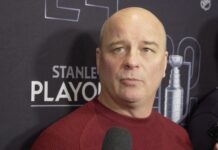



















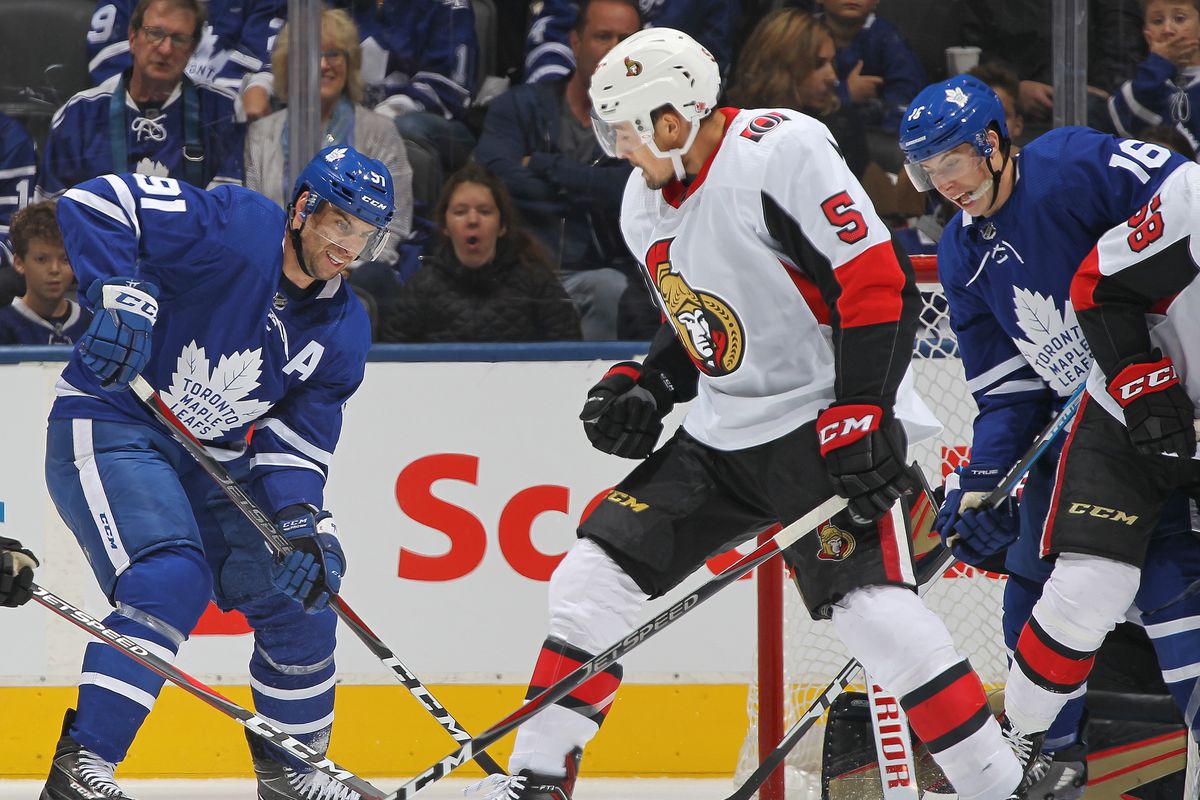
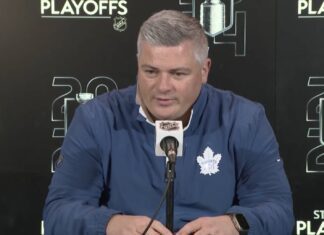




![Sheldon Keefe on the Maple Leafs’ struggling power play: “[We’ve scored] one out of 11 high-danger chances in tight to the net… We have been in those spots and haven’t converted” Sheldon Keefe, playoff press conference](https://mapleleafshotstove.com/wp-content/uploads/2024/04/keefe-pc-game-3-100x70.jpg)



![Jim Montgomery Post Game, Bruins 4 vs. Leafs 2: “[Marchand] still manages to get under people’s skin, yet he doesn’t cross the line” Jim Montgomery, Boston Bruins post game](https://mapleleafshotstove.com/wp-content/uploads/2024/04/jim-monty-pg-to-100x70.jpg)